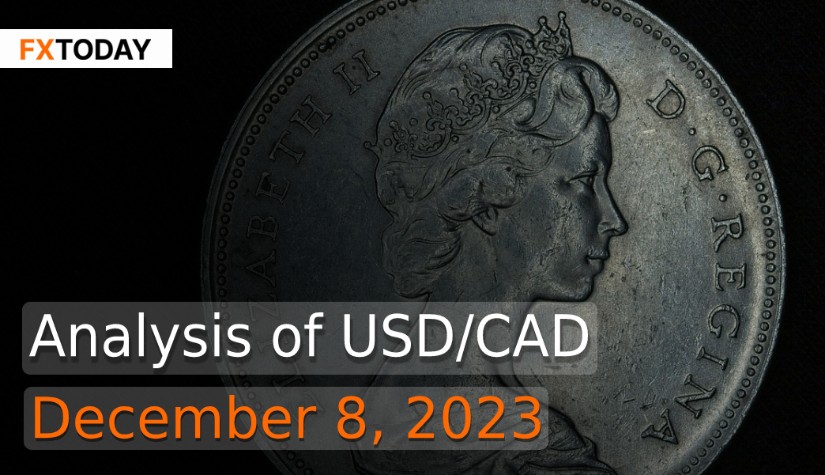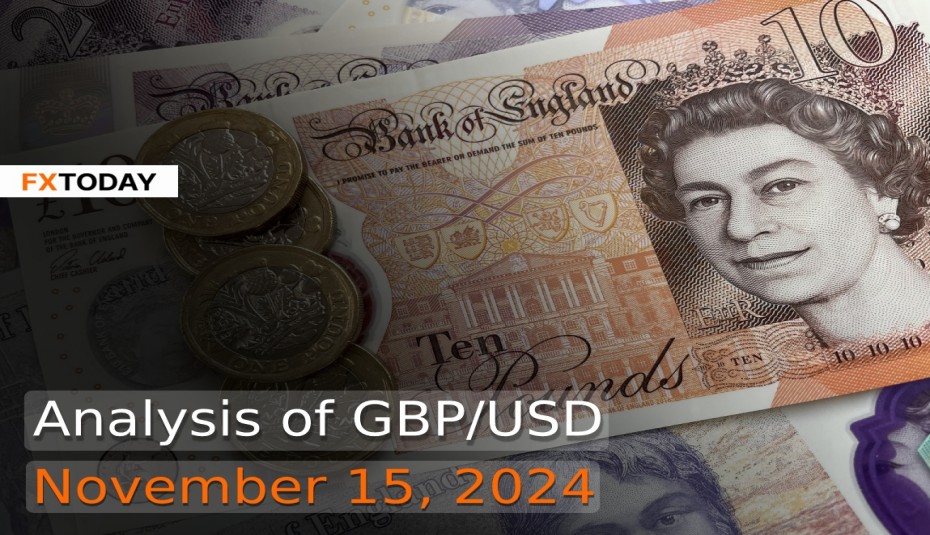Canadian Dollar Tends to Decline Amid Economic Slowdown
The Bank of Canada (BoC) decided to maintain its key overnight rate at 5% while keeping the option open for further hikes. Despite acknowledging an economic slowdown and a general easing of prices, the BoC expressed continued concern about inflation. The central bank had previously raised rates in June and July to a 22-year high and maintained this level for the past three policy-setting meetings. Inflation, although slowing to 3.1% in October from a peak of over 8% last year, remained above the bank's 2% target for 31 consecutive months.
Notably, the central bank altered its language, highlighting that labor market pressures had eased, and the economy was no longer in excess demand. The statement noted that higher interest rates were effectively curbing spending, and lower-than-expected oil prices were contributing to the economic slowdown.
In its October forecast, the BoC anticipated that inflation would hover around 3.5% until mid-2024 before gradually reaching its 2% target by late 2025. Governor Tiff Macklem had previously suggested that interest rates might be at their peak, given the disappearance of excess demand and expectations of prolonged weak growth. Canada's unexpected third-quarter economic contraction raised concerns, though it narrowly avoided a recession.
Recent data, Canada reported a larger-than-expected trade surplus in October, driven by a marginal increase in exports and a decline in total imports. Notably, the motor vehicles and parts category saw its first monthly decline since March, hinting at weakened demand and potential economic contraction in Q4.
Exports, led by aircraft and transportation equipment, offset declines in other sectors. Trade with the United States, Canada's largest partner, slowed, with both exports and imports declining.
In economic indicators, the Ivey Purchasing Managers Index showed Canadian economic activity expanding in November, but the service sector downturn deepened. The manufacturing sector contracted for the seventh consecutive month due to global industrial weakness. Canada's GDP unexpectedly contracted in the quarter, leading the Bank of Canada to expect muted growth until the end of 2024, primarily due to the impact of high-interest rates.
Canadian banks reported a mixed fourth quarter, with an overarching theme of rising bad loan provisions as a precautionary measure against economic uncertainties. The anticipation of Bank of Canada interest rate cuts in the coming year was a common factor influencing the banks' strategies.
A concerning report from Equifax Canada, an entity delivering credit bureau and information reports, highlighted an increase in consumer debt and credit delinquencies amid economic challenges such as high inflation and rising interest rates. Canadians faced a mounting debt burden, with a significant rise in the average credit card balance and a surge in non-mortgage delinquencies.
Meanwhile, the potential risk of having less fiscal flexibility was highlighted, as external factors or higher-than-expected debt costs could rapidly worsen the country's fiscal position. While Canada's general government net debt remained low among G7 countries, its gross debt as a percentage of GDP was higher than that of Germany and the UK.
Criticism targeted Canada's failure to meet debt-reduction goals, with skepticism about the government's fiscal responsibility. Despite the commitment to reducing federal debt as a percentage of GDP, Finance Minister Chrystia Freeland postponed debt-reduction goals twice in the current year. The new fiscal anchors outlined in the Fall Economic Statement signaled a deviation from previous targets, with increased spending directed at inflation alleviation, housing supply, and green technology subsidies. Nevertheless, despite the government's inconsistency with its debt reduction goals, Canada continues to receive top ratings from most credit rating agencies.
Analysts observed less upside for the Canadian dollar due to the economic slowdown, prompting a shift in expectations for Bank of Canada interest rate cuts. Money markets anticipated a rate cut as early as March, with a potential decrease of 25 basis points by April. The widening gap between the Canadian 2-year yield and its U.S. equivalent suggested increasing concerns about the Canadian economy.
The dollar, on the other hand, dipped in response to uncertainty around key U.S. labor data, despite signs of cooling in the labor market, as the uncertainty persists regarding when the U.S. Federal Reserve plans to begin trimming borrowing costs.
Data for Technical Analysis (30 Min) CFD USD/CAD
Resistance : 1.3578, 1.3580, 1.3583
Support : 1.3572, 1.3570, 1.3567
30Min Outlook
Source: Investing.com
Buy/Long 1 If the support at the price range 1.3568 - 1.3572 is touched, but the support at 1.3572 cannot be broken, the TP may be set around 1.3579 and the SL around 1.3566, or up to the risk appetite.
Buy/Long 2 If the resistance can be broken at the price range of 1.3578 - 1.3582, TP may be set around 1.3586 and SL around 1.3570, or up to the risk appetite.
Sell/Short 1 If the resistance at the price range 1.3578 - 1.3582 is touched, but the resistance 1.3578 cannot be broken, the TP may be set around 1.3571 and the SL around 1.3584, or up to the risk appetite.
Sell/Short 2 If the support can be broken at the price range of 1.3568 - 1.3572, TP may be set around 1.3562 and SL around 1.3580, or up to the risk appetite.
Pivot Points Dec 08, 2023 03:31AM GMT
| Name | S3 | S2 | S1 | Pivot Points | R1 | R2 | R3 |
|---|---|---|---|---|---|---|---|
| Classic | 1.3563 | 1.3567 | 1.3571 | 1.3575 | 1.3579 | 1.3583 | 1.3586 |
| Fibonacci | 1.3567 | 1.3570 | 1.3572 | 1.3575 | 1.3578 | 1.3580 | 1.3583 |
| Camarilla | 1.3571 | 1.3572 | 1.3572 | 1.3575 | 1.3574 | 1.3574 | 1.3575 |
| Woodie's | 1.3561 | 1.3566 | 1.3569 | 1.3574 | 1.3577 | 1.3582 | 1.3584 |
| DeMark's | - | - | 1.3568 | 1.3574 | 1.3576 | - | - |
Sources: Investing 1, Investing 2
Maximize your knowledge: Blog
















